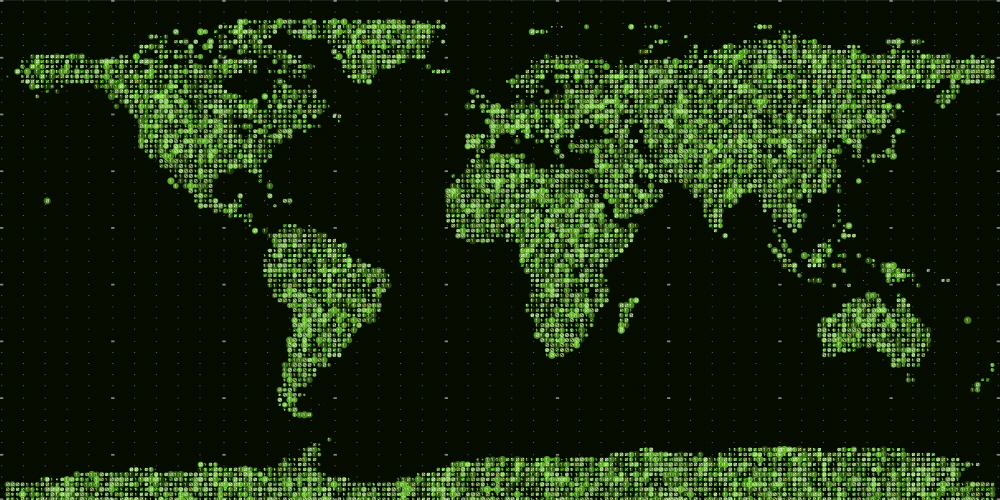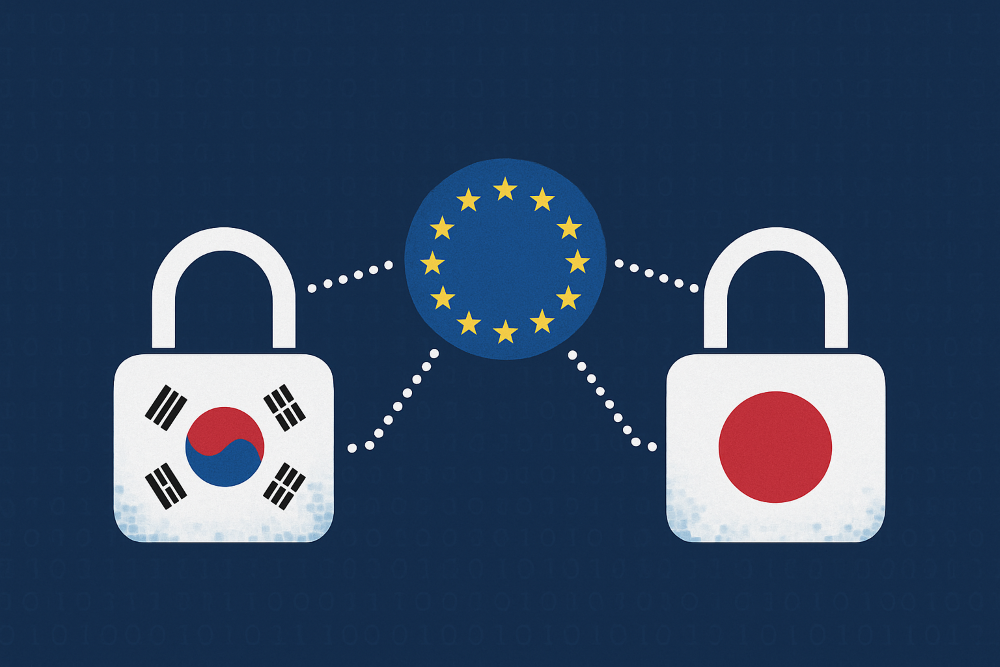- #South Korea

- Despite early optimism that
cyberspace would level the playing field, empirical cases show that cyber
operations largely reinforce existing power disparities, producing a “paradox
of cyber asymmetry.”
- Russia demonstrates how major powers
integrate cyber into full-spectrum hybrid warfare, while weaker actors like
Hamas and Iran face structural limitations, relying instead on asymmetric or
gray-zone tactics.
- For South Korea, this paradox
underscores both vulnerabilities—given its hyper-connected infrastructure—and
the need for multi-layered strategies to counter North Korea’s evolving cyber
capabilities and psychological operations.
Since the advent of cyberspace in
the 21st century, it has often been argued that power disparities between
states would diminish. Optimistic perspectives prevalent in international
security discourse suggest that even weak states or non-state actors, despite
their conventional disadvantages, could challenge major powers if equipped with
cyber capabilities. From this viewpoint, cyber tools are seen as potential
equalizers that can offset traditional military imbalances. However, empirical
analyses of real-world cases contradict this idealized assumption.
In practice, major powers engage
in comprehensive hybrid warfare strategies that integrate kinetic and cyber
operations to advance political and strategic objectives. Conversely, weaker
states and non-state actors—constrained by limited technological, infrastructural,
and organizational capacities—are compelled to adopt asymmetric strategies.
These actors frequently rely on penetration-oriented or symbolic cyberattacks,
cognitive and psychological operations, or dependence on external hacker
networks. Thus, cyberspace is far from a level playing field; rather, it
mirrors existing structural asymmetries and power hierarchies, giving rise to
what can be termed the ‘paradox of cyber asymmetry.’ This article explores this
paradox through detailed case studies of Russia, Hamas, and Iran.
Russia: A Textbook Case of
Full-Spectrum Hybrid Warfare
Russia has produced one of the
most instructive cases of modern hybrid warfare. The starting point was the
2008 Russo-Georgian War. On the eve of the conflict, Russia-related hackers
conducted large-scale DDoS attacks against Georgian government agencies, major
media and telecommunications outlets, and banks. These attacks went beyond mere
technical disruption: they paralyzed Georgia’s crisis management capacity and
blocked its channels of communication with the international community. Cyber
operations thus played a decisive role in undermining state resilience before
conventional military force was deployed.
Additionally, Russia engaged in
online psychological operations by disseminating disinformation, falsified
messages, and large-scale propaganda, thereby shaping public opinion and
weakening Georgian morale in advance of hostilities. Disruption of command-and-control
systems eroded the Georgian army’s operational effectiveness, while
international information flows were choked off. All of these effects
accelerated Russian maneuvers and ensured a rapid military victory.
This model was repeated in the
2014 annexation of Crimea. Ukrainian government agencies and media networks
were consistently targeted, television broadcasts were interrupted, and
intelligence systems were sabotaged. Critical infrastructure was also disrupted,
enabling Russia to dismantle resistance forces before troops were fully
mobilized and to block flows of information to the outside world, thus
expediting the annexation process.
During the 2022 full-scale
invasion of Ukraine, Russian cyber operations reached their peak. Months before
the invasion, a wave of cyberattacks struck dozens of government and public
websites, disrupting energy and financial IT infrastructure. On the day the war
began, electronic warfare units attempted to cut satellite internet connections
and segments of the Ministry of Defense’s networks. Cyber operations functioned
as a precursor and accompaniment to kinetic action, securing initial control of
the battlespace. At the same time, cyber espionage, data theft, and
disinformation campaigns targeting Ukrainian leadership further polarized
international opinion and sowed confusion.
The Russian model presents cyber
as not merely an auxiliary tool but a decisive factor in overcoming strategic
constraints and shaping the outcome of war. Crucially, however, these
operations were undergirded by vast resources, infrastructure, and military
power. Thus, contrary to the proposition that “cyber makes all actors equal,”
the Russian case demonstrates that for major powers, cyber serves to amplify
preexisting advantages. This is the first dimension of the paradox of cyber
asymmetry.
Hamas: Strategic Restraint and
Limited Cyber Warfare
Hamas made a fundamentally
different choice. In its October 7, 2023 surprise attack on Israel, Hamas
refrained from combining cyber and kinetic offensives. This was not solely the
result of capability deficits but of deliberate strategic calculation.
First, maintaining operational
secrecy was critical. A major cyber offensive launched beforehand would likely
have triggered Israel’s robust cyber defenses, heightening alert levels and
undermining the effectiveness of the surprise attack. By restraining cyber
operations, Hamas maximized tactical concealment and shock effect.
Second, Hamas’s inherent
limitations were significant. Without a specialized cyber corps or advanced
infrastructure, Hamas lacked the capacity to carry out systemic grid attacks or
to disable national critical infrastructure. Its cyber activities were confined
to phishing, website defacement, and sporadic DDoS incidents—clear indicators
of severely limited capability.
Third, Hamas relied heavily on
external actors. Following the eruption of hostilities, pro-Russian hacktivists
and pro-Palestinian hacker groups targeted Israeli government websites and
civilian services. Yet this activity was not centrally directed by Hamas but
instead reflected auxiliary efforts by sympathetic networks abroad.
Hamas’s strategic logic
illustrates another facet of the cyber paradox. If cyber were truly an
equalizing force, Hamas would have contested Israel directly in cyberspace.
Instead, capability deficits and strategic prudence led Hamas to suppress cyber
activity, paradoxically resulting in a rational tactical choice. In this sense,
the deliberate absence of cyber warfare itself became an expression of the
paradox of cyber asymmetry.
Iran: Limited Cyber Capacity and
Gray-Zone Tactics
Iran demonstrates how constrained
power and cyber capability shape asymmetric responses. In April 2025,
responding to Israeli preemptive strikes, Iran faced both limited conventional
options and inadequate cyber capabilities. As a result, Iran conducted selective
and localized cyberattacks alongside limited kinetic strikes.
First, Iran hacked surveillance
cameras to gather battlefield intelligence, thereby compensating for
conventional weaknesses and improving the precision of its retaliatory strikes.
Second, Iran’s exploitation of civilian surveillance systems generated disproportionate
psychological shock within Israeli society. Although technically limited, the
ability to repurpose everyday infrastructure into offensive tools magnified
insecurity—an archetype of asymmetric strategy.
Third, Iran attempted to disrupt
hospitals, transport, and segments of the power grid. These operations,
however, were selective and temporary, falling short of systemic collapse. The
attacks were tactical and disruptive rather than strategically decisive.
Fourth, the targeting of civilian systems blurred the boundary between military
and civilian domains, epitomizing gray-zone tactics. This allowed Tehran to
achieve outsized international visibility and psychological pressure despite
small-scale operations.
Consequently, Iran’s case shows
that cyber warfare did not provide a ‘weapon of equality’ to weak states.
Instead, cyber enhanced psychological and cognitive effects but enforced
conditional, capability-bound choices rather than enabling parity with major
powers. Thus Iran represents the third empirical manifestation of the paradox
of cyber asymmetry.
Implications for South Korean
Security
The cases of Russia, Hamas, and
Iran demonstrate that cyber warfare does not grant equal capabilities to all
actors; its use is conditioned by structural constraints and resource
disparities. These insights have particular relevance for South Korea’s security
environment.
First, South Korea’s
hyper-connected ICT infrastructure, while advanced, creates acute vulnerability
to cyber threats. The dense interconnection of energy, finance, transport, and
defense networks makes the nation especially susceptible to complex cyber-kinetic
offensives analogous to Russian-style hybrid warfare.
Second, North Korea, despite
inferiority in conventional military power relative to South Korea and the
U.S.–ROK alliance, has steadily developed cyber as a tool of asymmetric
strategy. Beyond financial theft and ransomware campaigns, Pyongyang is expanding
into psychological and cognitive operations. Similar to Iran’s gray-zone
tactics or Hamas’s reliance on external networks, North Korea may increasingly
depend on hacktivist alliances, deepfakes, and disinformation campaigns.
Third, cyberattacks differ from
other security threats in that attribution is often ambiguous. This complicates
strategies of deterrence and retaliation. Hence, South Korea must reinforce
multilateral cooperation on cyber norms and governance. State-centric defenses
are insufficient, particularly if North Korean cyberattacks are externally
networked through sympathetic non-state groups.
Fourth, resilience against
cognitive and psychological operations is crucial. Technical defenses alone
cannot counter campaigns that manipulate public opinion and social cohesion.
The Russian, Iranian, and Hamas cases confirm that the crux of cyber conflict
often lies in shaping the cognitive battlespace. South Korea must therefore
advance media literacy, fact-checking frameworks, and societal resilience
through institutional and educational initiatives.
In sum, South Korea must directly
confront the realities embodied in the ‘cyber paradox.’ Cyberspace grants North
Korea strategic opportunities while imposing new vulnerabilities upon the
South. Accordingly, Seoul requires multi-layered strategies encompassing
national defense, public–private cooperation, and robust international
partnerships.
Dr. Donghui Park is an Associate Professor at the Korea Army Academy at Yeongcheon (KAAY), where he teaches courses such as “Modern Warfare and Strategy” and “War in the 21st Century,” focusing on cyber, AI, and cognitive warfare for cadets. He currently serves as the Head of the Cybersecurity Research Lab at the KAAY Research Institute and is also an advisor to the National Counter-Terrorism Center under the Prime Minister’s Office. Dr. Park received his Ph.D. in Cyber Strategy from the University of Washington in Seattle, a Master’s in American Military History from Yonsei University, and holds a Bachelor’s degree in Military History from the Korea Military Academy.




